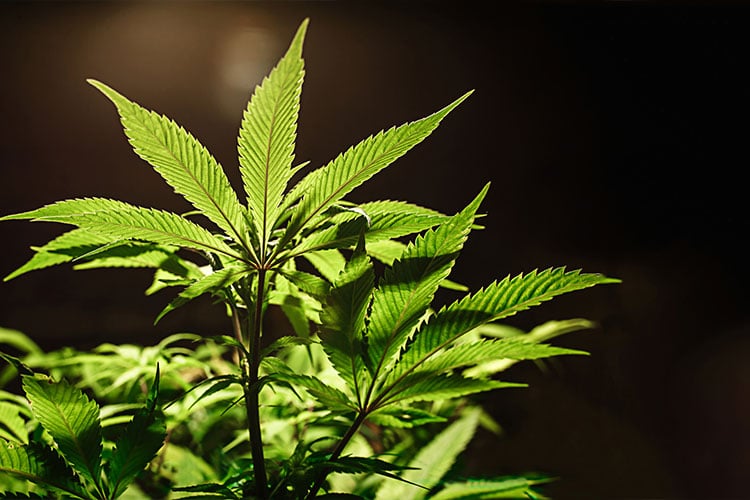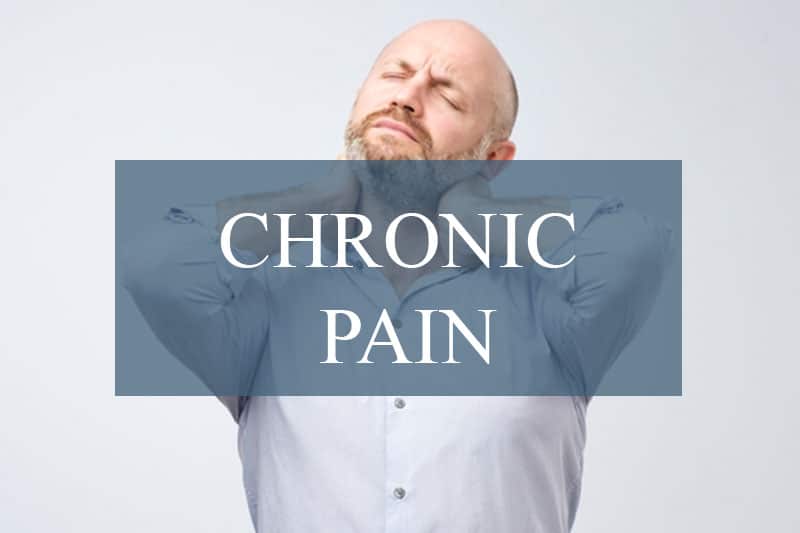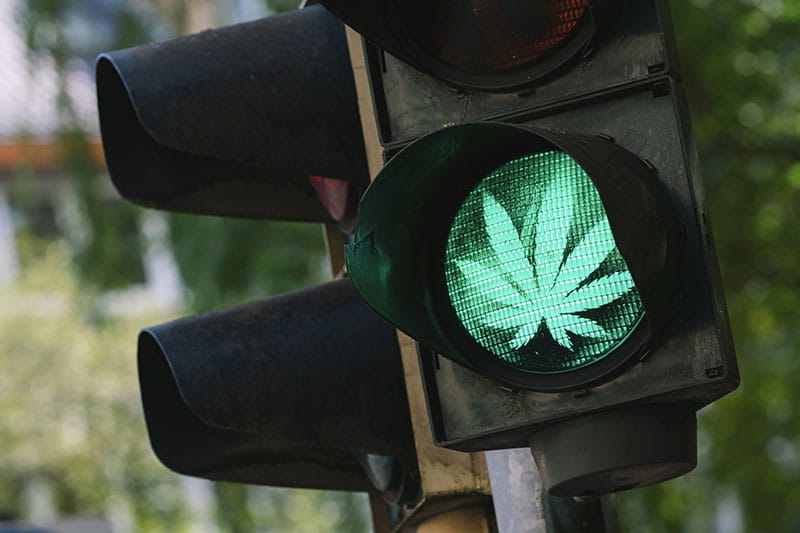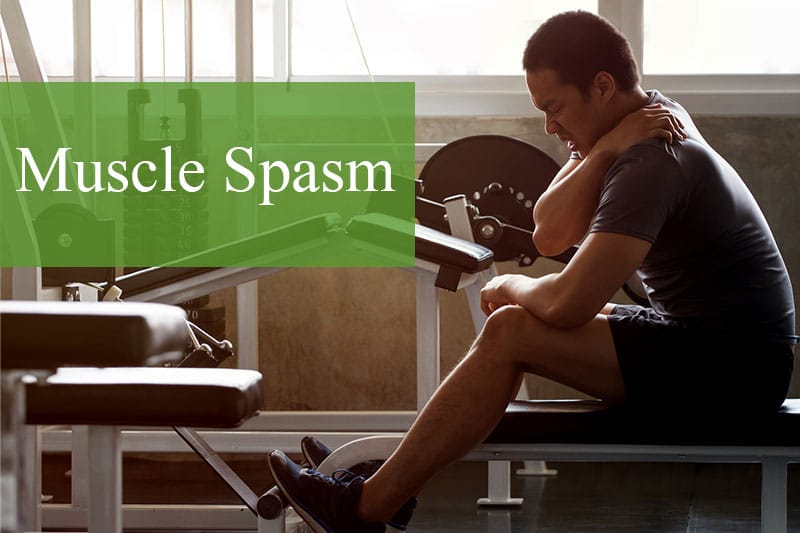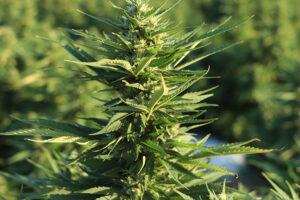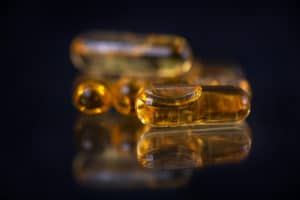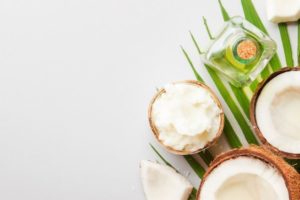As more states legalize marijuana and other cannabis products, people are paying more attention to their choices. If you are just now learning about cannabis, the two most notable ingredients are cannabidiol (CBD) and tetrahydrocannabinol (THC). These natural compounds produce different effects in the body ranging from pain relief to appetite stimulation.
The best way to understand when to use CBD and THC is through two cannabis products. One is CBD oil, which is made almost entirely of CBD. The other is marijuana, which contains roughly equal amounts of the two. Understanding the difference between CBD oil and marijuana will ensure you have the best experience possible.
What Is CBD Oil?
CBD is a cannabinoid. It is one of over 100 chemical cannabinoids found in cannabis. CBD is among the few active cannabinoids, known as phytocannabinoids, which means it interacts directly with your body. Unlike THC, though, CBD does not produce psychoactive effects. Put another way: you won’t get high
CBD oil can come from hemp or marijuana plants. Producers and manufacturers collect the oil through carbon dioxide extraction or steam distillation. Legally though, it cannot contain more than 0.3 percent THC. Remember this figure, because it will come in handy later.
Some companies use the term “CBD oil” as a catch-all term for CBD extracts. These products contain significant amounts of CBD, just in different forms. These include, but are not limited to:
- CBD capsules
- CBD oil for dabbing
- CBD Rick Simpson Oil (RSO)
- CBD tinctures
- CBD vape oil
Note that CBD oil is not the same thing as hemp oil. Hemp oil comes from the seeds of industrial hemp varieties of cannabis sativa plants. They are rich sources of omega fatty acids, protein, and vitamin E, but cannot legally contain THC, nor will they come with a certificate of analysis (COA).
What Is Marijuana?
Weed. Pot. Ganga. Mary Jane. Cannabis sativa. Marijuana has a long list of names for a bud that resembles a dusty green clump sometimes mistaken for flakes of oregano. While most people prefer to smoke marijuana, it is possible to incorporate cannabis into foods, pills, oils, sprays, or vaporizers.
The difference from CBD is that marijuana contains detectable amounts of THC. While the levels of THC vary from strain to strain, this is the psychoactive compound responsible for creating the sensation of being high. Users often associate this feeling with a sense of relaxation and euphoria.
How Do CBD Oil and Marijuana Work?
CBD oil and marijuana use the same mechanisms to impact our bodies and mind. Both have a similar chemical structure to your body’s endocannabinoids, each containing 30 hydrogen atoms, 21 carbon atoms, and two oxygen atoms. The small variations in their molecular structure account for their slight differences in effect.
After you smoke, apply, or otherwise ingest cannabis, the drug engages with your cannabinoid receptors. The interaction changes how your brain releases neurotransmitters. Neurotransmitters are your brain’s way of communicating messages between cells. That includes sending signals related to pain, sleep, stress, and more.
While scientists do not have a complete understanding of how this interaction works, they believe CBD and THC attach to the receptors. The attachment causes the receptor to activate. In the process, the brain starts releasing natural compounds, such as dopamine and serotonin.
Typically, the effects of CBD oil and marijuana kick in 1030 minutes after use. The effects last for approximately two hours, depending on the potency. Some effects, such as relaxation or sleepiness, may persist after the high sensation dissipates.
Legality in the United States
Here is where that 0.3 percent figure comes back into play. CBD is legal on the federal level as long as it does not contain more than 0.3 percent THC. If a cannabis product is over that limit, which includes marijuana, the federal government considers it a Schedule I drug.
Thanks to the Tenth Amendment, though, you can buy and use marijuana in certain states. Currently, marijuana is fully legal in 12 states. Another 28, including Washington, D.C., allow some combination of medicinal marijuana and decriminalization. In those states, you need a licensed physician to prescribe you marijuana.
Before you buy cannabis products, check out your state’s laws on CBD oil and marijuana. For instance, the law says you cannot transport marijuana across state lines even if you’re going from one legal state to another. You may also get in trouble if you don’t have a medical prescription in states that only permit medicinal use.
Medical Benefits
The million-dollar question with CBD oil and marijuana is, “When should I use them?” CBD oil and marijuana have distinct sets of medical benefits, so it’s essential to understand which product is appropriate for a particular situation. Here is a handy guide for when to use CBD vs Marijuana.
When to Use CBD Oil
Alleviate Chronic Pain
Arguably the most significant benefit of CBD oil is pain relief. That includes a wide range of pains that come from cancer, neuropathy, arthritis, migraines, and fibromyalgia. CBD alleviates this discomfort through its anti-inflammatory and signal-blocking properties.
When CBD is in your body, it interacts with your endocannabinoid system, which has two types of receptors, CB1 and CB2. CB1 controls signals related to the central nervous system, intestines, and tissues. CB2 receptors primarily control the immune system.
CBD acts as a key that unlocks these locks. Instead of directly triggering the receptors, it modifies how the receptors bind with cannabinoids. As a result, CB1 receptors do not process pain as vividly. Meanwhile, the CB2 does not overreact to aches and pains that otherwise cause inflammation and swelling.
When you use CBD for pain relief, you should feel a full-body sensation. You won’t be high, but it is comparable to feeling tipsy after a glass of wine or a deep massage. The intense relaxation gives your body the time to heal existing injuries while soothing current pain.
CBD’s anti-inflammatory properties have made it an increasingly popular choice among athletes. The compound reduces the harmful effects of oxidative stress that occur during exercise. Many athletes endorse CBD products that aid in pain management and muscle recovery. The World Anti-Doping Agency even removed CBD from its banned substances list in 2018.
Ease Depression
Researchers believe CBD can benefit people suffering from depression. That is because the compound has a positive effect on the serotonin receptors in the brain. Serotonin is known as the happy chemical because it contributes to our happiness and well-being.
While low serotonin does not cause depression, the two go hand-in-hand. Using CBD changes how your brain’s receptors interact with the serotonin already in your body. CBD enables more connections between the two, so you feel a greater sense of pleasure and contentment.
Take this 2018 study, for instance. Four researchers looked at various existing research on CBD and its effects on depression. They concluded that CBD has “anxiolytic, antipsychotic, and neuroprotective properties.” Put in layman’s terms: there are many benefits, including a potential use for depression.
CBD even has some advantages over traditional antidepressants. It works within minutes, while antidepressants can take weeks. CBD also does not have as many side effects. Therefore, you do not have to worry about insomnia, mood swings, anxiety, or sexual dysfunction.
Get Rid of Acne
Acne is a common irritation for people around the world. Acne forms when there is too much oil, bacteria, or dead skins in your pores. The mixture clogs the opening with a red bump that should otherwise contain a hair follicle.
CBD oil can reduce acne in several ways. For starters, it changes how your body produces sebum, which is an oily substance in your glands. CBD also has anti-inflammatory properties that prevent unwanted swelling and redness on the skin.
CBD oil is a preferable treatment because it is proactive rather than reactive. Instead of tackling blemishes after they form, it gets rid of excess sebum before it starts. Studies in The Journal of Clinical Investigation have backed up this idea, even calling CBD oil a “promising therapeutic agent.”
You can benefit from CBD oil if you have other skin conditions, too. One study from the PeerJ Life & Environment journal found cannabinoid receptors can reduce excess skin growth, a common problem for people with psoriasis. Another study found that 81 percent of people using CBD to treat itchy skin had positive results.
There are countless different skin treatments with CBD. You can choose between creams, oils, and balms, to name a few. Be diligent about looking at the label when you shop. Companies use various CBD terms, the three most common being:
- CBD isolate – the product is pure CBD. There are no other cannabinoids, terpenes, or flavonoids.
- Full-spectrum CBD – the product contains trace amounts of other cannabinoids, such as CBG and THC
- Broad-spectrum CBD – there is no detectable THC
Decrease Seizures
In 2018, the U.S. Food & Drug Administration (FDA) approved Epidiolex, an oral solution designed to treat Lennox-Gastaut syndrome and Dravet syndrome. Epidiolex was a significant milestone because it was the first FDA-approved medication to treat seizures in Dravet syndrome. It was also the first FDA-approved drug that contained a substance found in marijuana.
Years of laboratory studies and anecdotal evidence have proven CBD is an effective treatment for seizures. Epidiolex, which is 98 percent CBD oil, is the culmination of that research. Children with Dravet syndrome and Lennox-Gastaut syndrome experience fewer and more controlled seizures after using the medication.
What makes CBD oil a novel treatment is its impact on the nervous system. The medication affects the nervous system through a different pathway than other antiepileptic treatments. This route allows CBD to control seizures as they harness the brain receptors, something other drugs can’t do.
The most famous example of this success story is Charlotte Figi. As a child, she suffered multiple seizures a day due to Dravet syndrome despite regular medical treatment. Her parents eventually turned to CBD infused oil and managed to mitigate her seizures. Today, the family has a CBD brand called Charlotte’s Web.
Help with Psychosis
More than 100 clinical trials are currently studying the clinical benefits of CBD. Some of the most promising ones highlight the compound’s antipsychotic effects. As recently as February 2020, researchers have seen significant changes in the brains of people with psychosis, thanks to CBD.
When you consume CBD, you change the way your brain behaves. That includes activity in the prefrontal and mediotemporal brain areas, which control complex behaviors and memory, respectively. Researchers are not exactly sure how the process works, but patients using CBD experience a decrease in psychosis symptoms.
Research on the benefits of CBD on psychosis dates back to 1995. The Journal of Clinical Psychiatry published a study detailing a 19-year-old female patient with schizophrenia that took CBD for four weeks. Researchers saw a meaningful improvement in her acute psychotic symptoms.
When to Use Marijuana
Feel High Sensation
While CBD creates a full-body sensation, THC concentrates the feeling in your head. It is why many people talk about head highs when smoking or consuming marijuana. The effects vary from person to person, but most people experience a sense of relaxation and happiness.
Using marijuana has a therapeutic effect. It puts us more in touch with our environment: Many people report increased sensitivity to color, sound, taste, and smell. The heightened sense of awareness can also improve your overall creativity.
The THC in marijuana takes a few minutes to take hold. After ingesting it, the THC enters your bloodstream via your lungs. As the compound starts to concentrate, the high sensation slowly starts to wash over you. You may even feel a tingling sensation along your arms and legs.
The duration of your high will depend on several factors, including strain, dosage, and body weight. The form matters, too. For instance, smoking or vaping comes with an almost immediate high that peaks after 30 minutes and last for two to three hours. An edible takes 30 to 90 minutes to kick in with a longer peak and a high that lasts upwards of a full day.
Increase Appetite
The image of marijuana users having the munchies has permeated popular culture, and with good reason. THC can cause intense food cravings, especially for salty, sweet, and fatty foods. This effect is especially useful in a medical setting for anyone who is underweight, elderly, bulimic, or anorexic.
The THC in marijuana stimulates the endocannabinoid system, which is responsible for regulating energy and behavior. This section of the brain also controls appetite. The THC coaxes your brain into releasing the hormone ghrelin, which tells the rest of the body you’re hungry.
THC encourages the body to eat in other ways, too. For instance, you become more sensitive to smell. That way, when aromatic food is nearby, you are more inclined to eat it. THC also releases dopamine, so the physical act of eating is more pleasurable.
Your method of marijuana consumption impacts how much and what kind of food you eat. For instance, suppository marijuana leads to a greater caloric intake than smoking. This is partly because of how quickly the body can absorb the THC. Your overall tolerance also influences your appetite.
Reduce Insomnia
People have known for a long time that cannabis can help you sleep. In 2016, 8.4 million Americans shared that they use marijuana daily, many of them to improve their quality of sleep. Only within the last few decades have we published studies proving this connection.
A peer-reviewed study in the Journal of Psychoactive Drugs concluded marijuana reduces insomnia as well as pain. A survey of 1,000 people found that 84 percent went to bed sooner and slept better because of marijuana. Additionally, 83 percent said they reduced or stopped using other sleep aids.
This research makes sense. One of the possible side effects of marijuana is drowsiness. Consuming more marijuana only elevates the sedative effects. If you want to use marijuana as a sleep aid, you should consider using a strain that is THC dominated.
It is worth mentioning that CBD has recently emerged as a potential sleep aid, too. A 2018 study found that CBD “is associated with significant improvements in perceived insomnia.” The encouraging results and lack of side effects make CBD a top substitute for over-the-counter medications and prescription sleep aids.
Soothe Muscle Spasms
Marijuana provides people a way to effectively manage the discomfort that comes from muscle spasms, as well as other conditions we’ve discussed, such as chronic pain and insomnia. Not only does it relieve tension and strain, but cannabis also erases our perception of pain.
Marijuana works because THC binds to the cannabinoid receptors in the endocannabinoid system. When the THC connects, it reduces the level of inflammatory proteins our body makes. The inflammatory protein reduction then suppresses the spasm.
A 2014 study had people use marijuana therapeutically for eight months. Participants rated their pain on a scale from 0 to 10. Before the study started, the average pain level was 7.8. Afterward, it was 2.8, which translates to a 64 percent relative decrease in pain. Additionally, 71 percent of people reported no adverse side effects.
One of the most comprehensive studies on the subject used a synthetic cannabinoid called Sativex. Over a month, 500 people with multiple sclerosis took regular doses of Sativex. During the follow-up, researchers found about half of the participants had muscle spasticity improvements of at least 20 percent.
Treat Glaucoma
Glaucoma is one of the leading reasons for medicinal marijuana prescriptions. As the leading cause of blindness in the U.S., the disease debilitates people by slowly taking away their vision. Marijuana can restore that clarity for up to 3.5 hours at a time. That means smoking eight times a day for the best results.
Studies going back to the 1970s have found a link between marijuana use and glaucoma treatment. According to University of Michigan Medicine ophthalmologist Theresa Cooney, M.D., marijuana can reduce interocular pressure (IOP) up to 25 percent. IOP is the fluid that builds up in the eye and causes vision loss and nerve damage.
Several studies have shown marijuana reduces IOP just as well as traditional glaucoma medications. These results apply whether you inhale, eat, or inject marijuana. In most trials, a single dose produces the desired effects of over the counter or prescription medication.
The temporary effects of marijuana make it an ideal short-term solution for glaucoma. Cannabis may also provide the groundwork for related glaucoma research and medical advances in the future. The compound has remarkable promise, and it’s only a matter of researchers performing enough clinical trials to validate marijuana’s efficacy.
Side Effects of CBD Oil
Even if you take a large dose of CBD oil, you probably won’t experience anything other than mild side effects. These often come from CBD interacting with other drugs in your body, such as blood thinners. As long as you have genuine CBD, the only potential side effects are fatigue, drowsiness, reduced appetite, diarrhea, and dry mouth.
Side Effects of Marijuana
THC has temporary side effects. Even in a large dose, though, the compound is not lethal. Some of the most common side effects for THC include:
- Red eyes
- Dry mouth
- Increased heart rate
- Slow reaction times
- Memory loss
- Motor skill impairment
Currently, there is no research to suggest THC has any long-term side effects. Some researchers caution people with schizophrenia from using marijuana. The compound can cause a relapse in symptoms, according to the National Institute on Drug Abuse.
The Bottom Line
If you’re trying to decide between CBD vs marijuana, remember that each one has a unique set of properties that leads to different outcomes. If you consider first what you want to achieve, you can work backward to find the product that is right for you.
If you want to relieve stress after a long day of work, CBD is probably the better choice. If you want to treat insomnia, then go for marijuana. Feel free to experiment with different cannabis strains and products, so that you can more narrowly tailor your experience to the desired results.
FAQs CBD Oil and Marijuana
Question: When to use CBD oil or Marijuana?
Answer: CBD oil and Marijuana have distinct sets of medical Benefits. CBD oil can help you in your chronic pains, acne, and is an effective treatment for seizures while on the other hand Marijuana is helpful in increasing your appetite, reduce insomnia and soothe muscle pains.
Question: Is CBD oil and Marijuana Legal in United States?
Answer: Here is where that 0.3 percent figure comes back into play. CBD is legal on the federal level as long as it does not contain more than 0.3 percent THC. If a cannabis product is over that limit, which includes marijuana, the federal government considers it a Schedule I drug.
Question: Can CBD oil help in body pains and health disease?
Answer: Arguably the most significant benefit of CBD oil is pain relief. That includes a wide range of pains that come from cancer, neuropathy, arthritis, migraines, and fibromyalgia. CBD alleviates this discomfort through its anti-inflammatory and signal-blocking properties.
Question: Can CBD help in getting rid of acne?
Answer: CBD oil can reduce acne in several ways. For starters, it changes how your body produces sebum, which is an oily substance in your glands. CBD also has anti-inflammatory properties that prevent unwanted swelling and redness on the skin.
Question: How can CBD oil help in psychosis condition?
Answer: When you consume CBD, you change the way your brain behaves. That includes activity in the prefrontal and mediotemporal brain areas, which control complex behaviors and memory, respectively. Researchers are not exactly sure how the process works, but patients using CBD experience a decrease in psychosis symptoms.
Question: What are the benefits in using Marijuana?
Answer: Marijuana has a therapeutic effect. Many people report that it increases their sensitivity to color, sound, taste and smell. Other than that, it helps you to increase your appetite, reduce insomnia, and can help you soothe muscle spasms.
Question: What are the side effects of taking CBD oil?
Answer: As long as you have genuine CBD, the only potential side effects are fatigue, drowsiness, reduced appetite, diarrhea, and dry mouth.
Question: What are the side effects of taking Marijuana?
Answer: Marijuana contains THC, and THC has temporary side effects which varies from every person. Some of the most common side effects include red eyes, dry mouth, increased heart rate, and slow reaction times.
